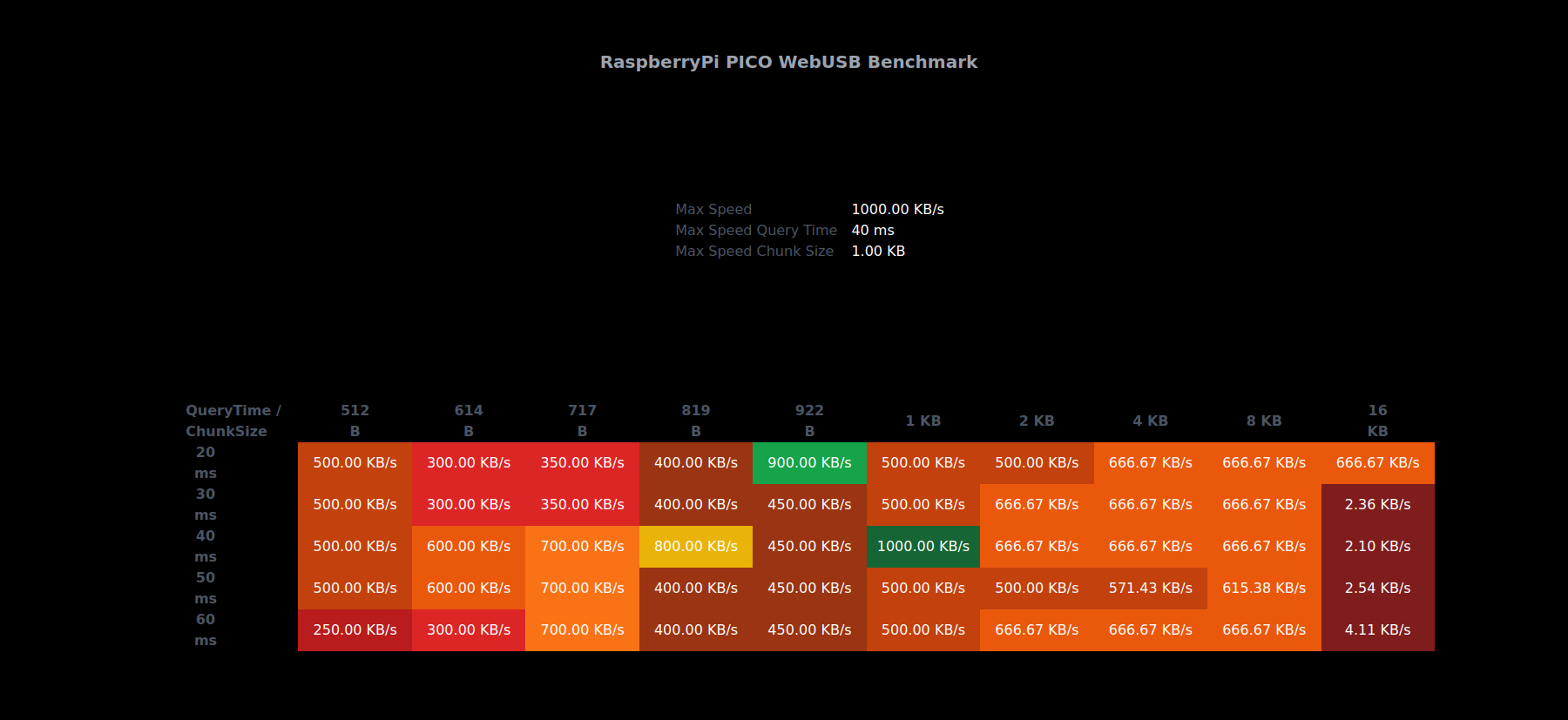Motivations
I have a Raspberry Pi Pico, which I bought with the intent of learning how to program microcontrollers & USB peripherals. In the near future, I see myself using these skillsets to try my hand at developing my own Audio Interface. So, with the Pico at hand, I decided to delve into USB, particularly TinyUSB and WebUSB. This post shares my exploration and findings as I experimented with Raspberry Pi Pico’s USB capabilities, specifically focusing on its performance with WebUSB. Imagine a product that can be configured directly from a browser or has its firmware updated via the browser, all powered by the microcontroller like Raspberry Pi Pico.
Demo

Tech Stack
For this project, I used C++ to program the Raspberry Pi Pico microcontroller to send a sine wave audio buffer over USB 2.0 continuously.
The audio signal is received by Google Chrome’s WebUSB API in a Svelte frontend, enabling it to play the audio and analyze the speed and data transfer.
Architecture

Further Documentation
I have expanded further in my blog post on performing WebUSB Performance Test for the RaspberryPi Pico.
